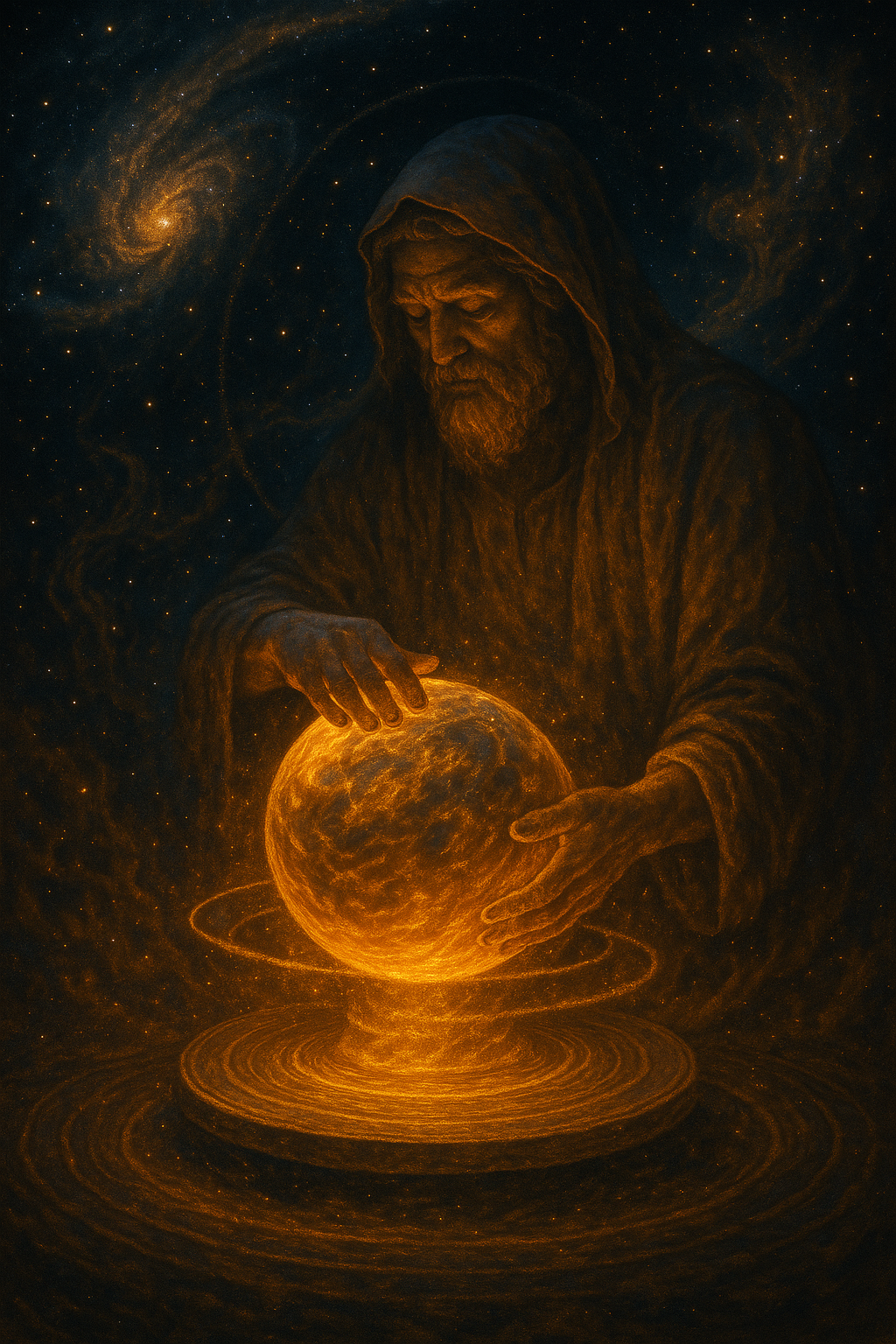Clay Creation Myths and the Rhythms of Emergence
Across continents and cultures, ancient stories describe how the world—and humanity—was formed. Surprisingly, many of them begin not with thunder or fire, but with something simple and familiar: clay.
In these myths, the divine sculptor—a god, goddess, or creative force—kneels before the earth, wet clay in hand, and begins to shape reality. The image is humble, yet powerful. But what are these stories really telling us? And why does this symbol echo across the globe?
In the framework of Emergent Theory, these clay myths hold a deeper wisdom: they show us how form arises from field—how the conditions of rhythm, time, and space act as the invisible hands that shape the potential of the world.
🧱 Clay: The Substance of Becoming
In myth, clay is never just dirt. It’s symbolic of a primordial field—a formless, receptive medium awaiting contact with intention, pattern, or force. It represents potential held in suspension.
To shape it, something must interact with it. Enter the divine potter.
✨ Myths from the Field
These myths, from every corner of the world, encode the same archetype: Creation is Emergence. And emergence requires conditions.
Egypt: Khnum on the Potter’s Wheel
In ancient Egypt, Khnum shapes humans on a spinning wheel from Nile clay. The wheel becomes a symbol of time and cyclical emergence, where form is shaped not in an instant, but in rhythm.
China: Nüwa and the Cord of Life
Nüwa sculpts nobles from yellow clay and creates the rest by dragging a cord through mud—symbolizing differentiated frequencies, like sound waves pulling pattern from field. Status is born from method—hand-crafted versus rhythmic imprinting.
Yoruba: Obatala’s Sculpted Beings
The Yoruba god Obatala molds humans from clay who must then be animated. This animation—whether through breath, spirit, or fire—suggests that form alone is not life. It takes frequency to awaken the field.
Mesopotamia: Aruru’s Sacred Craft
In Sumerian myth, the goddess Aruru (Ninhursag) crafts humans to serve the gods, again from clay. Here, creation is not spontaneous—it’s intentional design shaped through purpose, reflecting early views on stewardship and service.
Greek: Prometheus and the Fire of Form
Prometheus molds humanity from clay and gifts them fire. Fire here is more than flame—it’s the infusion of coherence, the ignition of form into meaning. The divine spark is not just warmth—it’s consciousness.
🔄 Rhythm, Time, and Space: The Invisible Wheel
In each of these stories, shaping clay isn’t enough. The myths point to three essential forces that allow clay to become world:
- Rhythm – The pulse, breath, or repeated action that informs the pattern (e.g., the spinning wheel, the dragging cord). Rhythm encodes sound as structure.
- Time – The unfolding sequence that allows potential to mature, to be pressed, dried, or fired. Time stabilizes transformation.
- Space – The openness in which form can arise—whether a physical expanse or an energetic field. Space is the canvas of coherence.
Together, these create the conditions of emergence. The mythic potter isn’t shaping alone—they’re working with field logic, harmonizing with the unseen matrix of potential.
🌀 Emergent Pattern: From Myth to Field Code
These ancient metaphors mirror what we now explore in modern emergence science, wave interference, and harmonic coherence:
| Mythic Element | Emergent Principle | Symbolic Function |
|---|---|---|
| Clay | Latent field potential | Raw, malleable substance |
| Potter’s Wheel | Time and cyclical rhythm | Rotational emergence |
| Divine Breath/Fire | Carrier wave or charge | Life-giving frequency |
| Cord or String | Linear resonance | Structured rhythm/sound |
| Drying/Firing | Phase transition | Stability and coherence |
🌿 Why It Still Matters
In today’s hyper-digital world, these ancient myths remind us that creation is a process, not a product. That everything we bring into being—art, identity, culture, consciousness—is shaped through the interplay of field and form.
We are not separate from the clay.
We are the clay—shaped by rhythm, matured in time, opened by space.
And just like the potter, we too shape—and are shaped—by the emergent field around us.
So the next time you feel in flux, unfinished, or undone—remember:
You are still on the wheel.
Still being shaped by sacred rhythm.
Still soft enough to become something new.


Leave a Reply